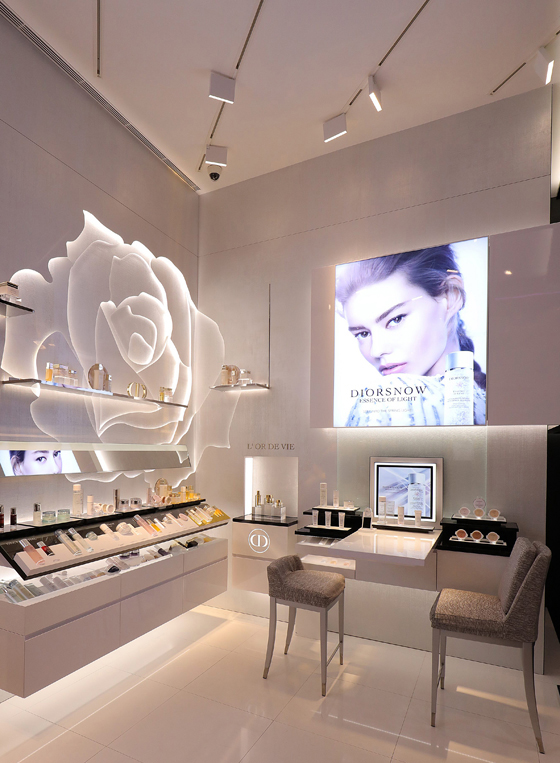A light reduction: mawa design
Brand story by Katharina Sommer
Michendorf, Allemagne
30.01.18
German lighting manufacturer MAWA DESIGN has leveraged its visually pared-down and formally perfect designs to position itself internationally as the go-to supplier of advanced, architectural lighting systems.
The wittenberg lamp series presents the apartments in Hamburg’s Elbphilharmonie building in the best light; Photo © Engel & Völkers, Nina Struve
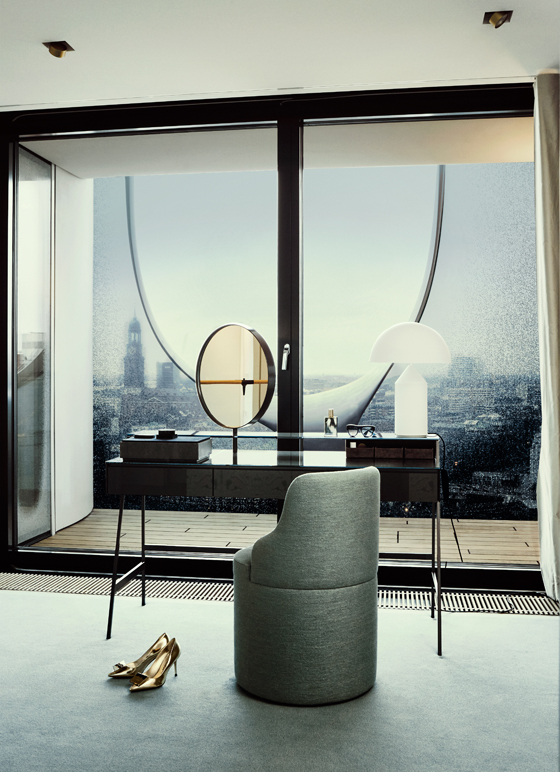
The wittenberg lamp series presents the apartments in Hamburg’s Elbphilharmonie building in the best light; Photo © Engel & Völkers, Nina Struve
×With a thorough understanding of design and how things work, mawa Design of Brandenburg, Germany, develops and produces high-quality luminaires which in terms of both their technology and construction are always in step with the times. Company founder Martin Wallroth began 40 years ago with residential objects, before cooperating with external designers in the 1980s and, from that point forward, increasingly concentrating on the manufacture of luminaires.
It was through his early encounter with two very different classic luminaires of the 1950s – “schliephacke” and “ssymmank” – that Wallroth saw the light, as it were. Originally developed by designer Fridtjof Schliephacke as a luminaire for a student residence hall, “schliephacke” unites a table and floor lamp and is conceived for industrial production in the spirit of the Bauhaus. For students, it was ultimately too expensive, but in the 1960s it found its way into the homes of numerous consumers with an affinity for design and in this way advanced to become a modern classic. “Learning to see luminaires” – this is exactly what Wallroth did in coming to terms with this important document of the period, which mawa reprinted and continues to sell today.
The reworked series wittenberg 4.0 is striking for its more compact design without visible screws or wires, and its lamp head with a large light-emitting surface that is well-shielded to prevent glare
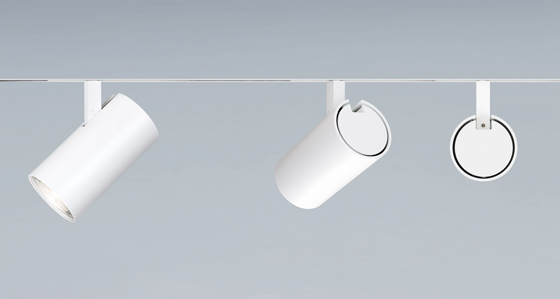
The reworked series wittenberg 4.0 is striking for its more compact design without visible screws or wires, and its lamp head with a large light-emitting surface that is well-shielded to prevent glare
×The flamboyant floor lamp “ssymmank” caught Wallroth’s attention at a trade fair. What captivated him, however, was not so much its unaccustomed aesthetic – it takes the form of a flower – as the complex fabrication of its individual “petals” from polycarbonate. Forming the material, which was still new when the lamp was developed in 1959, was an engineering feat of the highest order. This pioneering achievement made a lasting impression, and “ssymmank”, too, found its way into the mawa product range as a reissue.
The lamp head of wi4-eb-1r-kr can be swivelled 365° and angled up to 90°. It comes in a chrome, copper, brass, matt-black or matt-white finish

The lamp head of wi4-eb-1r-kr can be swivelled 365° and angled up to 90°. It comes in a chrome, copper, brass, matt-black or matt-white finish
×Thanks to large investments, the design manufacturer was transformed into a high-tech enterprise around the turn of the millennium. The eastward expansion of the EU and increasing globalisation changed the market at that time and necessitated a rethinking of production practices. The decision to invest in CNC technologies, optimised assembly processes and employee qualification proved to be the right direction. Today mawa develops highly complex solutions and technically sophisticated luminaires for renowned customers.
System luminaires such as the spotlight “fbl”, which is milled and folded out of a single piece of metal, or the luminaire family “seventies”, which delivers the highest output from the smallest physical volume, are just two mawa designs that have garnered numerous awards. A further success story is the spotlight “wittenberg”, the product of a collaboration with lighting designer Jan Dinnebier. Following a two-year development phase, mawa has now brought the reworked model onto the market under the name “wittenberg 4.0”.
Different construction types and a wide range of accessories make wittenberg 4.0 extremely flexible in terms of use
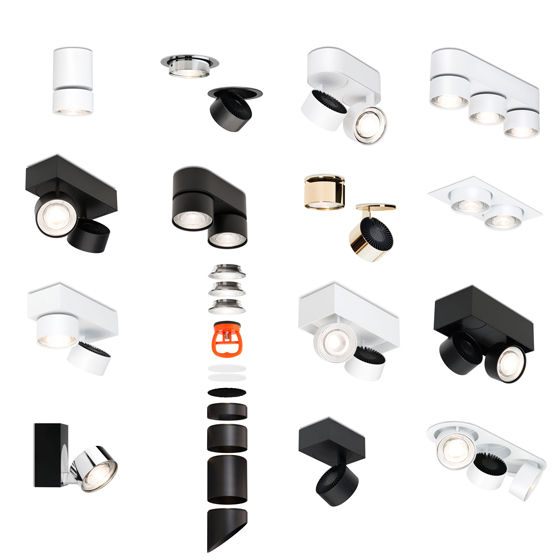
Different construction types and a wide range of accessories make wittenberg 4.0 extremely flexible in terms of use
×At first glance, the spotlight “wi4.0”, measuring just 76 millimetres in diameter in its smallest version, is striking for its elegant, unobtrusive housing and simple, timeless design. The spotlight’s defining feature, however, is its head, which can swivel out to 90° and, in its most recent incarnation, be rotated up to 365° to illuminate even the most elusive corner of a space. Flexibility is thus a key aspect of the “wittenberg 4.0” series. Compared with its predecessor, the spotlight’s head volume was kept the same while its light-emitting surface was increased and its light output improved by more than 50 per cent.
As with the “fbl” and “seventies” luminaires, the intelligent system does away with visible cords and screws. When a part has to be replaced or repaired, the bayonet connector (patent pending) enables the simple refurbishment of the head entirely without tools. Lenses allowing three different beam angles and special diffusers for widening the angle of illumination can also be easily exchanged and adjusted according to need.
The track-mounted fbl spotlight (top; Dior flagship store, Malaysia) is one of mawa’s bestsellers, while the one-piece 8 uplight (above) is a new addition to the portfolio. Both are milled out of a single piece of metal and folded to form a rectangle
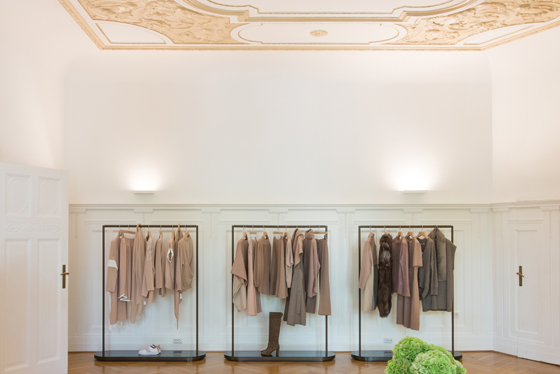
The track-mounted fbl spotlight (top; Dior flagship store, Malaysia) is one of mawa’s bestsellers, while the one-piece 8 uplight (above) is a new addition to the portfolio. Both are milled out of a single piece of metal and folded to form a rectangle
×Company founder Martin Wallroth’s passion for luminaires, and the high demand he places on them, stems from his close examination of classic lamp designs, his fascination for technology and his inventiveness. With a “fresh team and the right feel for the market,” as Wallroth calls it, the medium-sized high-tech company has worked its way right to the top in just a few years. Today, mawa design illuminates names including Dior and Siemens, venues such as Hamburg’s Alsterhaus and Elbphilharmonie, and is represented in the collections of major museums in Germany and abroad.
© Architonic







